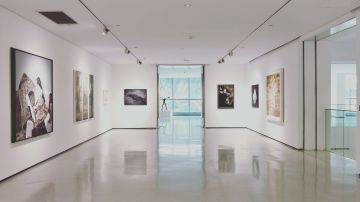Celebs and Activists Are Campaigning to Build Latino Museum in D.C.
Washington D

Photo: Unsplash/@deanna_j
Washington D.C. is home to several museums including one dedicated to African American and American Indian history but there is currently not one dedicated to Latinx history in the U.S.
The Friends of the American Latino Museum (FRIENDS) is the only non-profit organization dedicated to the creation of a National American Latino Museum in Washington, D.C. They’ve joined forces with activists including author Julissa Arce, politicians including Congressman José E. Serrano, Congressman Will Hurd, Senator Bob Menendez, and Senator John Cornyn, as well as celebs including music producer Emilio Estefan and actor Diane Guerrero.
They’re launching a national campaign during Hispanic Heritage Month asking for Congress to support the National Museum of the American Latino Act — a bipartisan bill that would establish the Smithsonian National American Latino Museum.
Estuardo Rodriguez, President, and CEO of FRIENDS explained to HipLatina the importance and value in developing a Latino history museum.
“The narrative around the Latino community in the United States is often distorted through entertainment, news, social media, and politics. Time and time again, we are presented as ‘invaders’, a people foreign and struggling to survive in a land that in great part was settled early on by the Mexican, Spanish and indigenous communities that were here hundreds of years before the Pilgrims arrived,” Rodriguez said. “As many Americans live and work in cities and states with Spanish names including Los Angeles, San Antonio, Colorado, and Montana, it is disturbing to hear the use of the word “assimilation” repeated so often as it relates to Latinos.”
Every year more than 30 million visitors from all over the U.S. visit the National Mall in D.C. and there is not a single permanent exhibition on Latino history in the Smithsonian Institution, he added.
Latinx stories are drastically underrepresented in Smithsonian collections and the organization itself acknowledged this in a 1994 Willful Neglect report that showed the absence of Latinx history was severe to the point that it appeared as if it were intentional. The report included 10 recommendations including the development of a Latino museum and an increase in the number of Latinx in the Smithsonian workforce.
A 2018 report “Invisible No More” by UCLA’s Chicano Studies Research Center and the Latino Policy and Politics Initiative found there’s still a lot of room for improvement. In 1994, 2.7 percent of the Smithsonian’s workforce was Latino and in 2018, it’s barely increased to 5 percent, according to the Smithsonian.
There has been some progress when it comes to Latino-centered collections with The Smithsonian noting that the National Portrait Gallery has increased its acquisition of Latino subjects and artists by 90 percent, and the National Museum of African American History and Culture has recently begun to collect items related to Afro-Latinidad. However, the authors of the report say they could not find any mention of a Latino museum in any of the Smithsonian Institution’s annual reports from the past 23 years.
“Latinos remain largely excluded from participation in arts and cultural institutions that tell the American story,” Chon Noriega, a co-author of the study and the director of the Chicano Studies Research Center wrote in the report’s foreword. “The Smithsonian has an opportunity to play a leadership role for the field.”
The objects included in the Latino museum would be decided on by Smithsonian curators but Rodriguez emphasizes the rich cultural, political, scientific, medicinal and political contributions made by Latinx individuals in the U.S. In addition to highlighting how Latinx have fought in every war since the Revolution, he mentions some of the historical figures that should be part of the exhibitions including astronaut Ellen Ochoa, baseball player Roberto Clemente, Supreme Court Justice Sonia Sotomayor, and civil rights activist Cesar Chavez.
According to the UCLA report, The Smithsonian established the Latino Curatorial Initiative in 2010, and between 2012 and 2016 there has been an average of seven Latino curators per year as opposed to only two in 1994. They have produced 51 publications, 23 exhibitions and acquired 320 new collections and acquisitions the report states.
Emilio Estefan has been advocating for the museum for 25 years now and commented in a press release about his dismay that it’s taking this long.
“There is no doubt that Latinos have made critical contributions to the foundation and development of this country in the arts and in every possible sphere. All we ask is that the contributions of Hispanics receive the same level of exposure and respect as those seen when you visit the Smithsonian museums in DC. We respectfully request that this bill be passed in this congressional session.”

















